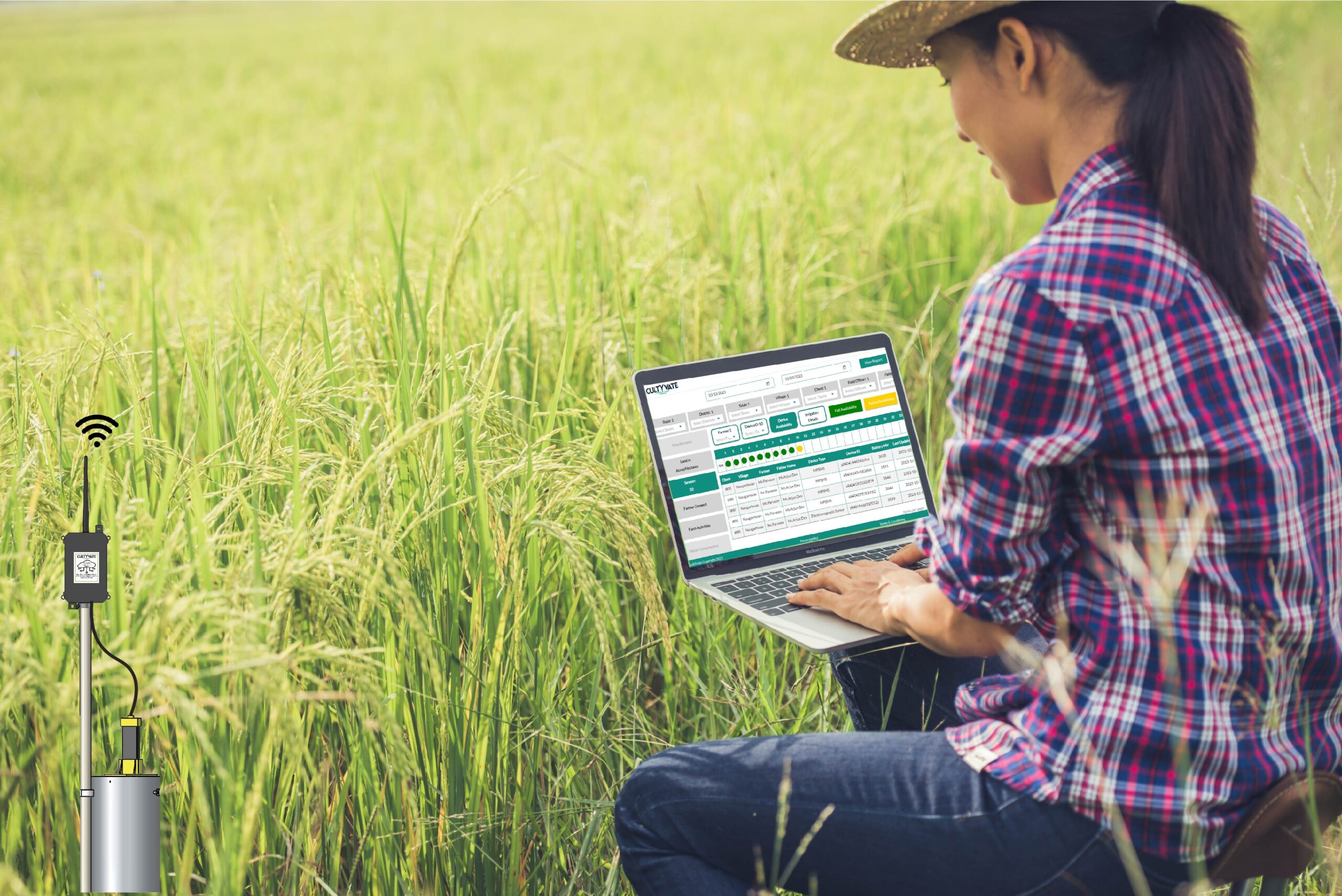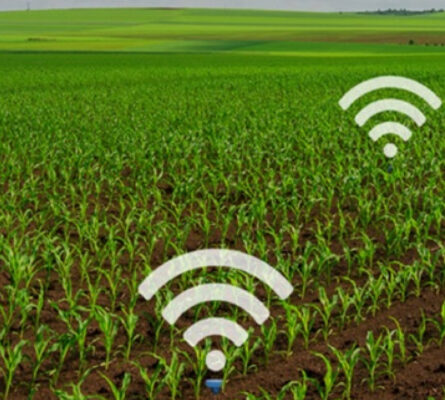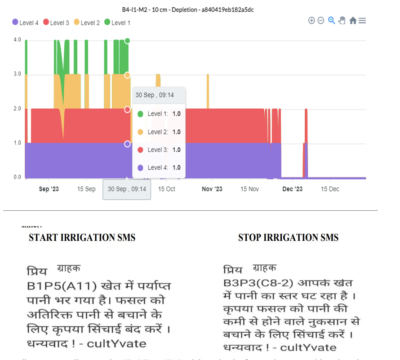
Precision farming is the art of using advanced technology and data-driven practices in farming. It’s not just a buzzword; it’s a way to balance nature and profitability, enhancing both productivity and reducing the environmental impact of farming. We’ll explore eco-conscious farming through the lens of precision agriculture to unravel the secrets behind elevating grain quality and crop yields while caring for our planet.
Ever wondered why paddy crops are perfect for precision farming? Paddy, or rice, is more than just a grain; it’s a crucial global food source. Billions rely on rice for nourishment due to its resilience, adaptability, and high yield. Understanding how to cultivate rice smarter and sustainably is essential.
Let’s delve into the exciting realm of global precision agriculture and understand how soil moisture sensors are revolutionizing the future of farming.
What is Precision Farming?
Precision farming is an advanced agricultural approach that integrates technology, data analytics, and detailed mapping to optimize farming practices. It involves collecting and analyzing various data sets related to soil conditions, crop health, weather patterns, and more, often using tools like GPS, sensors, drones, and satellite imagery. Farmers use this information to make highly targeted decisions, such as precisely applying resources like water, fertilizers, and pesticides only where and when needed, thus minimizing waste and maximizing efficiency. By employing these data-driven insights, precision farming enhances productivity, minimizes environmental impacts, and allows for proactive management of farms, ultimately leading to better crop yields and sustainable agricultural practices.
Precision Agriculture Leaders
Japan leads in precision agriculture using GPS-guided machinery and robotics, significantly optimizing crop production and contributing approximately 4.32 trillion Japanese yen to the country’s GDP in 2021.
Israel excels in precision irrigation and water management, combating water scarcity with techniques like drip irrigation that reduce water usage by 70% and increase crop yield by 150% compared to conventional methods.
China is rapidly adopting precision agriculture methods, incorporating drones, sensors, and data analytics. In Lintong District, Xi’an City, Shaanxi Province, Cheng et al. (2023) achieved remarkable results: a 44% reduction in water consumption, a 37% decrease in nitrogen application, and increased economic benefits by 7 to 8%.
India actively promotes and incorporates precision agriculture, leveraging advanced technologies and government initiatives. In a study conducted by Kalyan et al. (2022), they experimented with an Internet of Things (IoT) Alternate Wetting and Drying (AWD) irrigation system, entirely software-operated. The findings revealed that this method conserves 40-45% of water and significantly increases yield by 16% compared to conventional irrigation methods.
The Art of Precision Agriculture – more clarity, data-driven
Precision agriculture is not just a fancy way to improve your finances; it’s a smart approach to farming that also reduces carbon emissions. It’s all about using resources wisely. In this context, soil moisture sensors play a vital role, like a personalized advisor for your crops, helping you with irrigation in an efficient way.
How Soil Moisture Sensors Work
These sensors act like private detectives for your field, monitoring moisture in the root zone. They provide precise data on soil water content, allowing you to make informed irrigation decisions. No more overwatering, which can harm grain quality, or underwatering, which stunts crop growth.
Eco-Friendly Farming – Less Waste, More Green
Precision agriculture is a waste-reducing magician. By monitoring soil moisture and providing the right amount of water at the right time, you save water drop by drop. It’s like turning off a tap when it’s not needed, but on a larger scale. Your paddy fields thrive, and your water bills stay reasonable.
Soil Moisture Sensors: Guardians of Grain Quality
Ever wondered how to elevate your rice to the caviar of grains? Meet your secret weapon: soil moisture sensors. These unsung heroes are crucial for top-notch grain quality in your paddy fields.
By preventing overwatering and ensuring the right moisture levels, soil moisture sensors protect your grains from potential issues like mould, diseases, and uneven growth. These sensors provide your crops with a VIP treatment, helping to maintain optimal moisture conditions, which in turn reduces the risk of fungal diseases. Fungi thrive in environments with high humidity and moisture, and over-watering creates an ideal breeding ground for fungal spores to germinate and infect plants.
Precision Agriculture Unleashed
Think of precision agriculture as an orchestra, with each aspect playing a vital role in nurturing your paddy crop yield. High-tech tools like soil moisture sensors and GPS-guided machinery ensure every seed receives the royal treatment.
Unleash Your Paddy Fields’ Potential
Data-driven decision-making is a core element. Analyze data on soil quality, weather patterns, and crop health to tailor your farming practices. Your crops receive the perfect hydration, eliminating undernourishment or overwatering.
Smart Water Management for Maximized Crop Yield
Precision agriculture focuses on water efficiency. Soil moisture sensors track soil hydration, preventing water wastage. Tailored irrigation boosts crop yield by ensuring your rice fields receive the right amount of water.
Financial Benefits of Precision Agriculture
Precision agriculture isn’t just eco-friendly; it’s wallet-friendly. By using fewer resources, like water and fuel, you cut expenses. Lower water bills, reduced fuel costs (thanks to fewer field trips), and an overall friendlier farming budget come as sweet bonuses
Precision agriculture helps you run your farm with surgical precision, reducing water, fertilizer, and pesticide usage. It trims water bills and optimizes expenses while maintaining crop quality.
Environmental Perks of Precision Agriculture
This eco-friendly approach isn’t just about saving money; it’s about saving the environment. Reduced chemical usage and decreased fuel consumption lead to lower carbon emissions. Water conservation supports future generations.
Tips for Mastering Precision Agriculture
To make precision agriculture work for you:
- Choose the Right Sensors
Soil moisture sensors are your secret weapon. Select ones that match your soil type and climate. Make them your allies for an eco-friendly, profitable paddy farm.
- Embrace Data
Precision agriculture thrives on data. Gather insights on soil moisture, weather, and crop health. Use specialized software to analyze this data.
- Don’t Overdo
Precision agriculture isn’t about excess. It’s about doing things right. Adjust irrigation and fertilization based on data and recommendations for a greener, more profitable farm.
As the leading producer of rice, Punjab faces the imminent risk of desertification due to excessive water usage in traditional rice cultivation methods. Cultyvate, in collaboration with CIPT (Centre for International Projects Trust), addresses Punjab’s critical agricultural challenges. Cultyvate’s AWD IoT sensor & cloud farm advisory solution intervenes by sending real-time notifications to farmers about soil moisture levels, enabling precise irrigation management. By employing this system, farmers efficiently alternate between field drying and flooding, conserving up to 50% of water usage. This reduced irrigation not only saves on fuel and electricity but also fosters healthier crops, minimizing stress and reducing the need for pesticides. Additionally, the precision in irrigation significantly cuts Methane (GHG) emissions by up to 60%, allowing farmers to earn carbon credits, thus transforming paddy cultivation in Punjab towards sustainable, eco-friendly practices
In the end, precision agriculture is the smart, environmentally conscious choice. It maximizes crop yield, conserves resources, and fosters eco-friendly farming while boosting your profits. Embrace it and watch your farm thrive in more ways than one.
Listen to some of our happy farmers in Punjab.

